

The Classic British Isles Buses Website
Transport in Argentina - page 4, rail transport in 2011 and 2018 (by Dick Gilbert)
Last updated 26 August 2024
Email Events diary Past events list Classified adverts Classic U.K. Buses Classic Irish Buses Classic Manx Buses
| Buenos Aires buses in 2011 | Di Tella cars in 2011 | Aircraft in 2011 | Railways in 2011 and 2018 | Classic cars in 2011 and 2018 | Railways in 2019 |

This former Great Southern Railway line across Argentina closed in 2012 but the station and large maintenance yard is still preserved at Veinticinco de Mayo (which means 25th of May and is normally called just Veinticinco locally). This is one of a series of pages reviewing transport items of interest that caught my eye during three fascinating trips to Argentina (and Peru) in March 2011, again in March 2018 and again December 2019/January 2020.
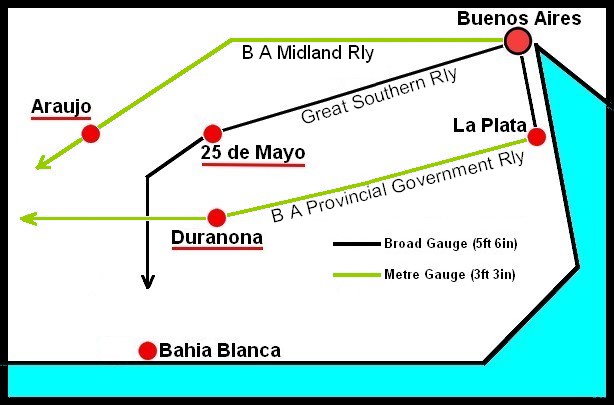
This page looks at three railway lines, all now closed, surrounding the town of Veinticinco de Mayo about 150 miles south west of Buenos Aires in the north of Argentina. My daughter lives there, so that's where we stay when we visit. This schematic map shows only a fraction of the lines that were built in the region, many with the help of the British.
The one at the top of the map was the former Metre-gauge Buenos Aires Midland Railway that passed through Araujo and deeper into this vast agricultural region. The Great Southern Railway line in the centre was broad-gauge, and ran from Buenos Aires through Vienticinco and then south west towards the coast and Bahia Blanca. The lower Buenos Aires Provincial Government Railway line was another Meter-gauge track bringing agricultural produce east through Duranona and onward to La Plata, capital of Buenos Aires Province. All the photos were taken in March 2018 and show one station from each line (underlined in red). We start with Veinticinco.
VEINTICINCO DE MAYO

This is the station at Veinticinco de Mayo, seen from the street. A broad-gauge line (5ft 6in) was built by the British through here in 1896 by the Buenos Aires & Great Southern Railway and it grew to be a significant station for three reasons - passenger services to the Capital and the coast, agricultural products being shipped to Buenos Aires, and the development of a major railway maintenance and repair facility.
When the railways were nationalised in 1948 this became the General Roca Railway, named after a former President. The line to Buenos Aires closed in 2010, was reopened (only as far as Veinticinco, and only twice per week) in 2014, and closed finally in 2016. However the town values the historic importance of the railway to the local heritage and the buildings are preserved in good order, with part of the former maintenance yard converted into a public park. There are no train services passing anywhere near the town today.

This is a view looking along the down platform toward the coast. As you can see, it is kept in fine shape. The ticket office and waiting room are on the left with a typical Argentinean agricultural goods shed on the right. The pampas area is wonderfully fertile and the great agricultural production led to the building of big freight warehouses in even the smallest of stations.


On the left, flanked by a shrine (for those who don't trust rail travel) and a notice board, is the door to the waiting room. This is known in Argentina (and Spain) as the Sala de Espera. In Spanish and French there's not a lot of difference between the words for wait and hope. So this always looks to me like the Room of Hope, which will probably ring a bell with a lot of British rail travellers!
On the right we can see a brass plaque erected by the town council in 1996 to mark 100 years since the first train passed through the station in October 1896. Little did they know that, 20 years after this plaque was dedicated, the line would close for good.
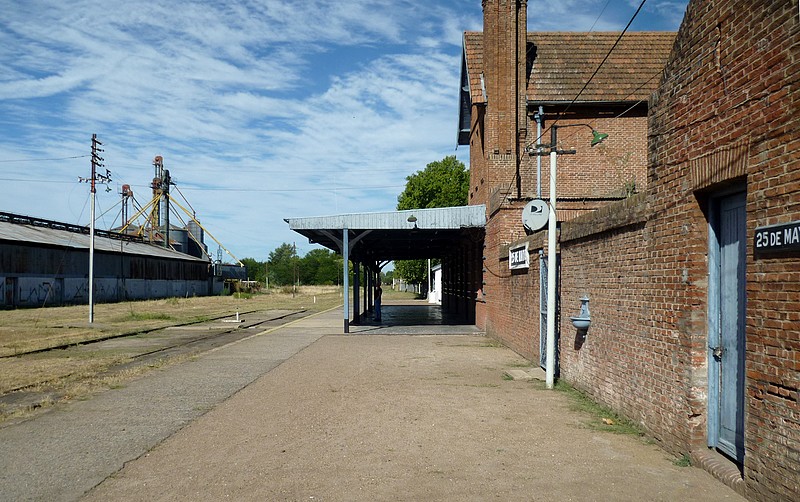
Looking the other way (towards Buenos Aires) the extensive good sheds are even more apparent, with more modern grain silos also visible in the background. On the right, a water fountain basin in the wall with a press-button tap is an unexpected feature. Those who are good judges of gauge will recognise that the track width in the centre of this picture is wider than what we are used to in the UK. What a difference 9 1/2 inches makes! There were three main gauges used in Argentina - broad, standard and metre - but only broad and metre were used in this region.

Some old rolling stock still stands in the sidings off the platform at 25 de Mayo. The diesel machine on the left we will examine in more detail below. Three wagons are parked here (only two visible in this picture). An axle box on the green one was dated 1938, but I think the brown ones are much older. I doubt that the willow tree stood here when the station was at its peak.

When we visited, all these three wagons appeared to be occupied by vagrants but nobody seemed to mind. One resident chatted for ages, but was so drunk that we gained no useful information from him.

This unusual beastie is a Matisa PV6 Neptune track recording machine. As it travels down the line it measures variations in gauge, curvature, twist and various other features that assess the state of the track. I can think of a few lines around the world that would benefit from a visit by this device. It is Swiss, has a Leyland diesel engine, weighs 10 tons and probably dates back to the late 1950s. You don't see many of these, and it is probably here because Veinticinco used to be a railway maintenance centre.

On the right is the site of the main line south to Bahia Blanca (track now lifted, or perhaps buried) and on the left is the spur into the maintenance area. Also on the left, in the bushes, are a few sheds (some occupied) that, on closer inspection, seemed to have been converted from railway wagons.
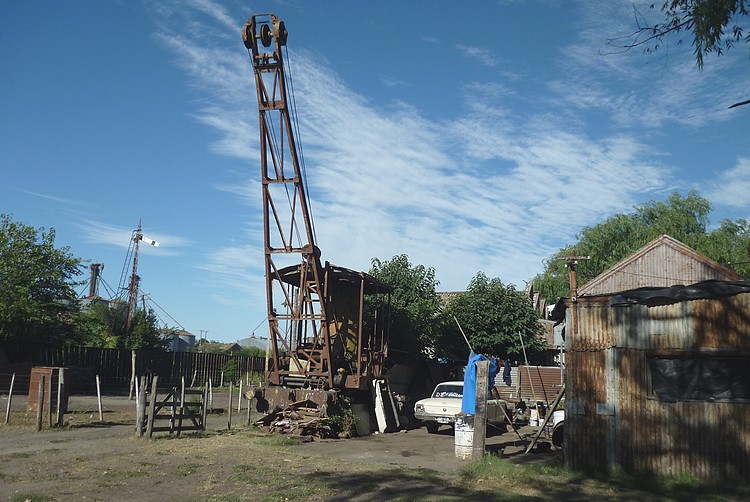
Where the line ran into the works area we came across the first of two abandoned steam cranes. The worksheds on the right are now somebody's home, and that's a wonderful old Ford Falcon in the yard (see my Classic Argentinean Cars page). On the left is a home signal just off the end of the station platform which would look quite appropriate on any old British railway.
Another visit in January 2020 enabled me to get better pictures and some serial numbers from that crane, and more details of its identity can be found on my updated railway page here.
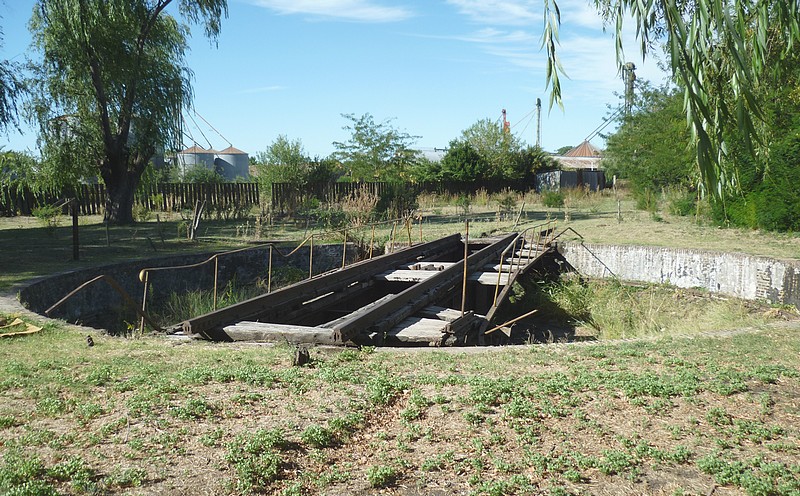
Further into the yard was a turntable. It was manually operated and had just been left to rot (which it did!). In fact when I returned in January 2020 it had deteriorated quite a lot and more details of its condition - and its probable maker - can be seen on my updated railway page here.
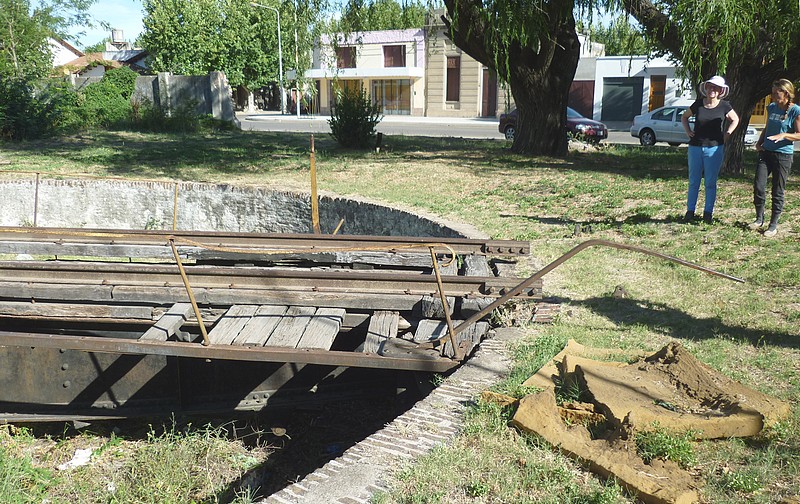
Surprisingly the turntable still rotated very smoothly in 2018 (it doesn't now!), simply by applying pressure to the handle on the right, although I'm not sure that the foam mattresses contributed much. That's my wife and daughter in the background. I'm glad we saw this table while it was still in working order.
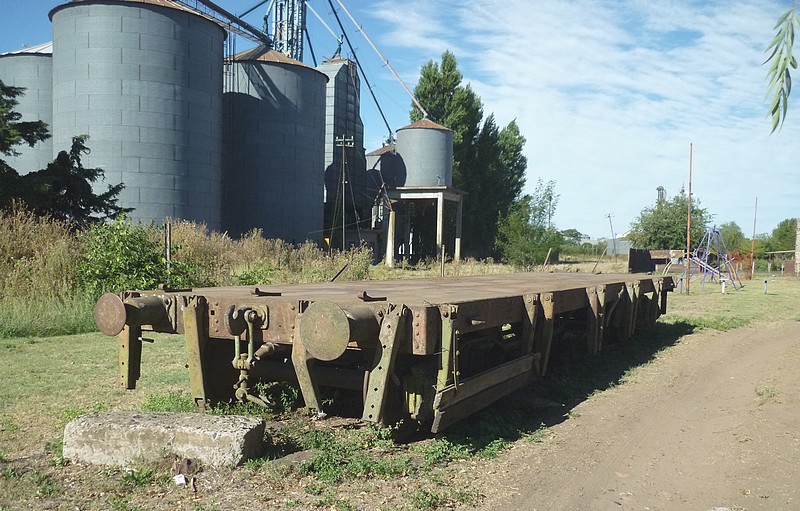

Here's another steam crane - must be early 20th century.
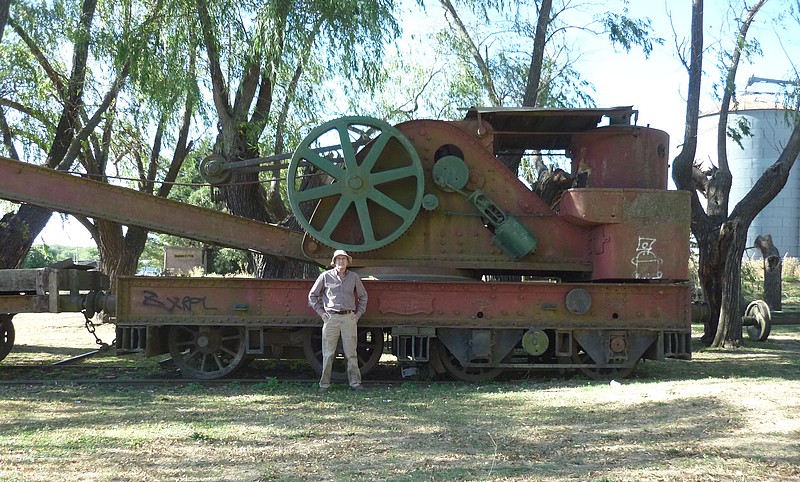
Here it is again, with me providing scale.
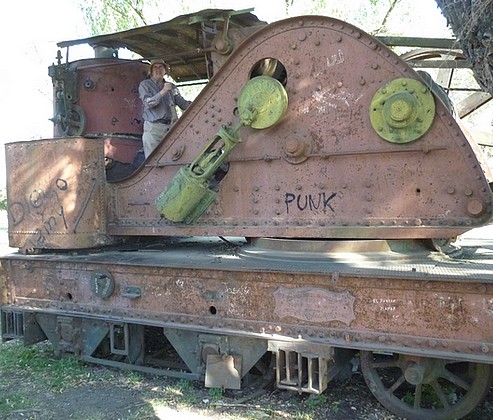
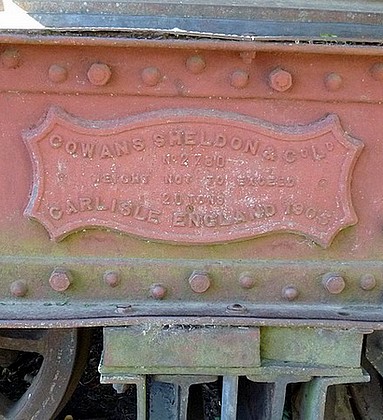
On the left is the cab - full of levers and wheels. It must have been damned hot in there when the boiler was running at full power. On the right is a close-up of the plaque on the chassis beam. In case it's not clear, it says COWANS SHELDON and Co Ltd, no. 2780, WEIGHT NOT TO EXCEED 20 TONS, CARLISLE ENGLAND 1905. Cowans Sheldon have been making cranes for the railway industry since 1866 and are still doing so today.
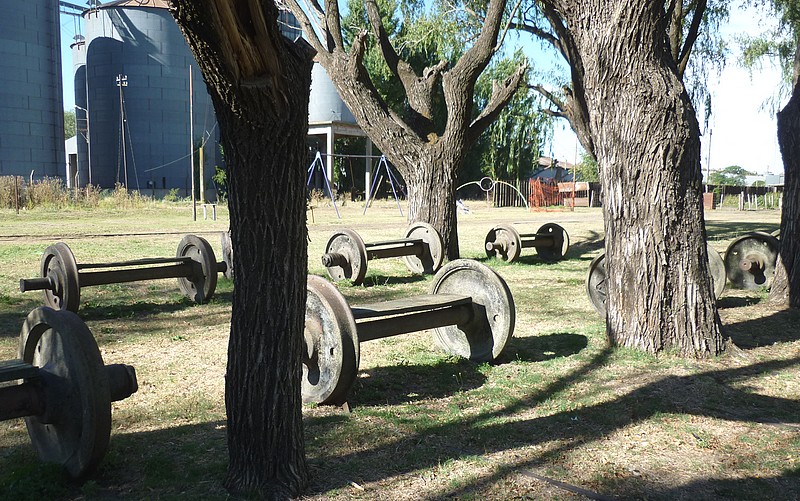
So what do you do with old railway axle sets? Turn them into wooden benches for your new public park of course!

And bogies make fine picnic tables too. No shortage of railway junk here and good use of a former large railway repair yard.
BLAS DURANONA

Duranona (seen here from the road entrance) is a Metre-gauge (3ft 3in) station on the southern outskirts of Veinticinco town. It is a small stop on the Buenos Aires Provincial Government Railway line from La Plata to (eventually) the pampas. It reached Blas Duranona in 1912 and became part of the FCGMB (Ferrocarril General Manuel Belgrano Railway) after nationalisation in 1948. The line was closed in 1961 with most of the track being removed in 1974, and the present occupants of the station (one of whom is seen here with my daughter and her partner Diego) has lived in the station pretty much ever since.
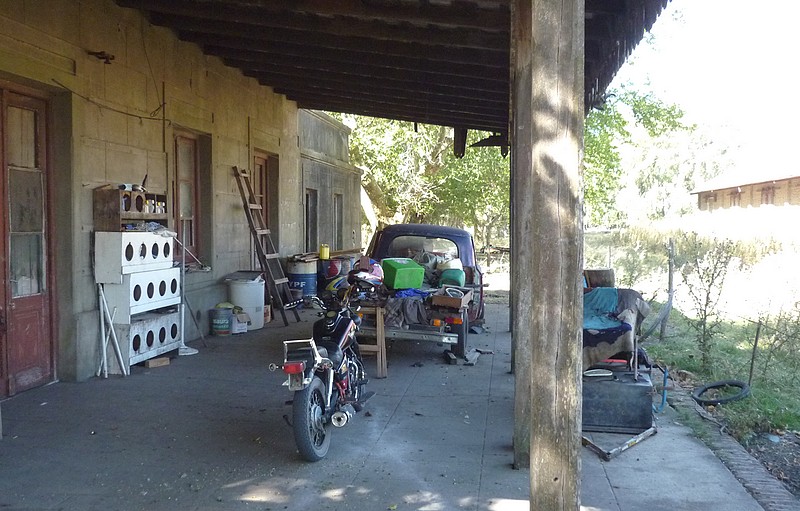
On the platform (looking toward Saladillo) we can see doors to a waiting room and a ticket office. That car down the far end is an old Di Tella pick-up, based on a 1950s Austin Cambridge, and you can see more about that on this page.
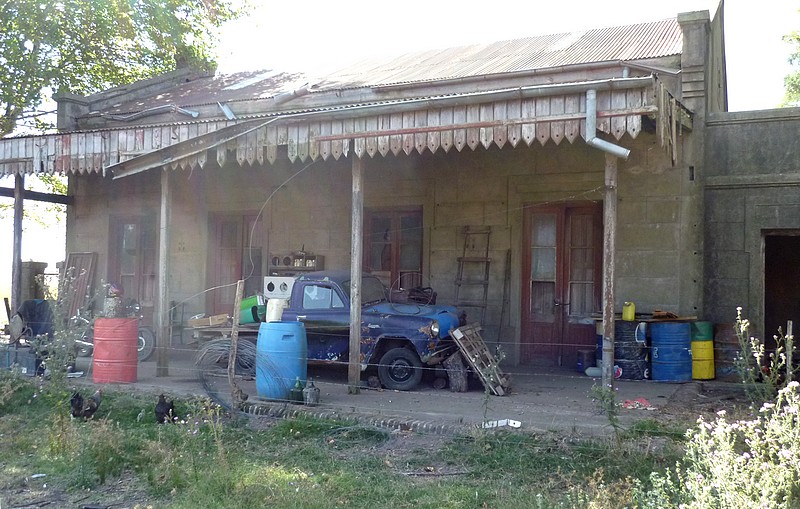
You can see that it's a pretty small station from a passenger point of view, and that's because its main function was the transport of agricultural produce. All these small stations look the same on a satellite map or Google Earth. The buildings are in the middle of a long rectangle with the former trackbed (now usually a footpath) coming in at one end and out at the other. It is therefore quite easy to spot the exact route of a line and where all the stations were.
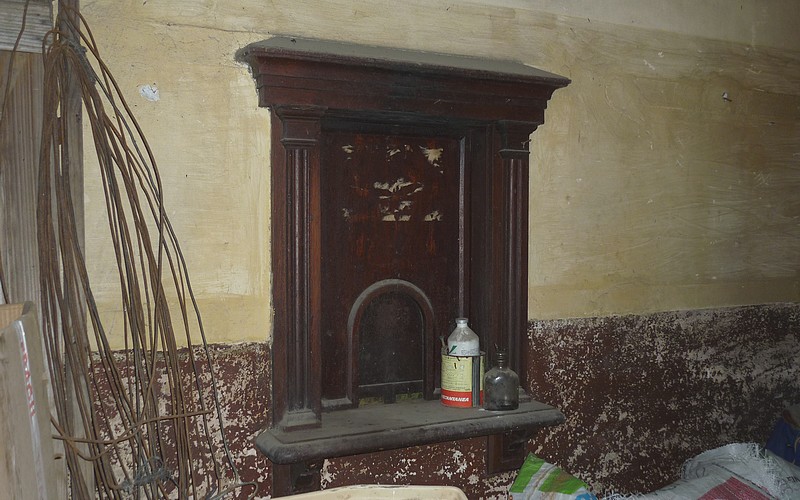
The old ticket counter still exists but the interior is generally a bit of a mess.
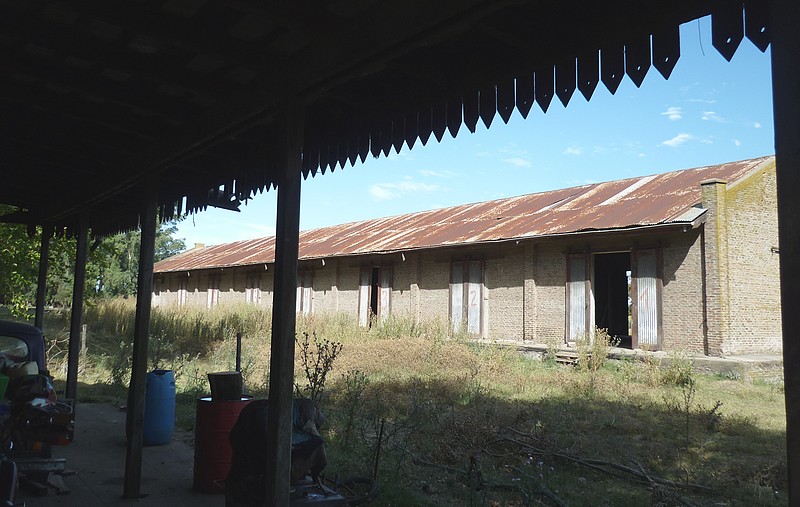
There is no track left at Duranona but one of three former large warehouses still stands - an indication of the scale of the agricultural production at even a relatively minor station.
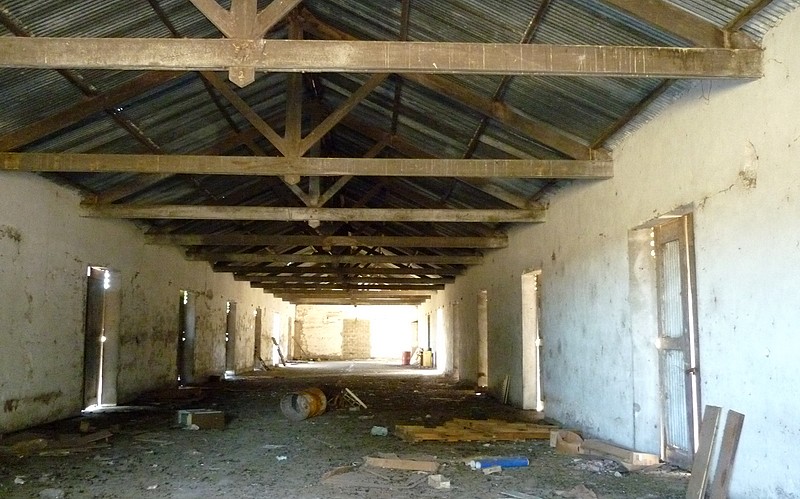
Inside the warehouse are large doors on the left for unloading carts and road transport, and similar doors on the right for loading the railway wagons. This building is now apparently sometimes used for parties and raves by local kids.
ARAUJO

This Metre-gauge line from Buenos Aires to Carhue (322 miles) was completed in 1910 by the British- owned Buenos Aires Midland Railway but became part of the General Belgrano Railway (FCGMB) after nationalisation in 1948. The line closed in 1977 and Cesar Mesotti (seen here with the station building behind him on the right) has lived in Araujo station ever since.
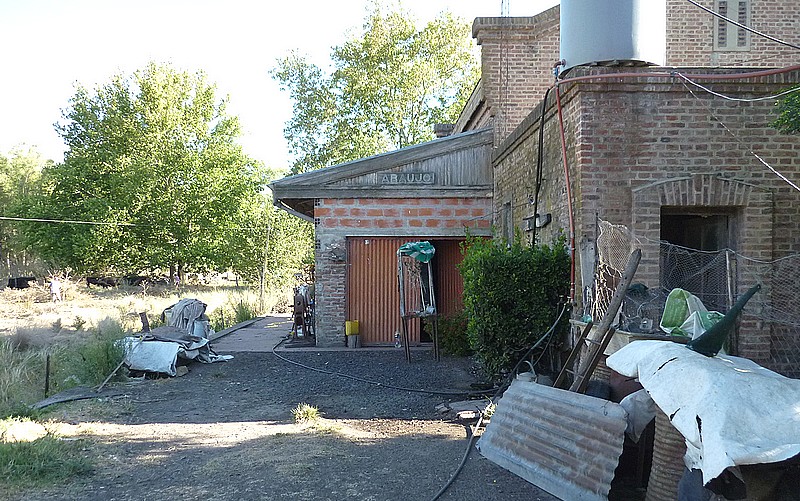
Here is the station, looking north. The brick construction (with brown doors) under the canopy was added by Cesar to provide an extension to the house, but the rest is original. The platform edge is just visible on the left.
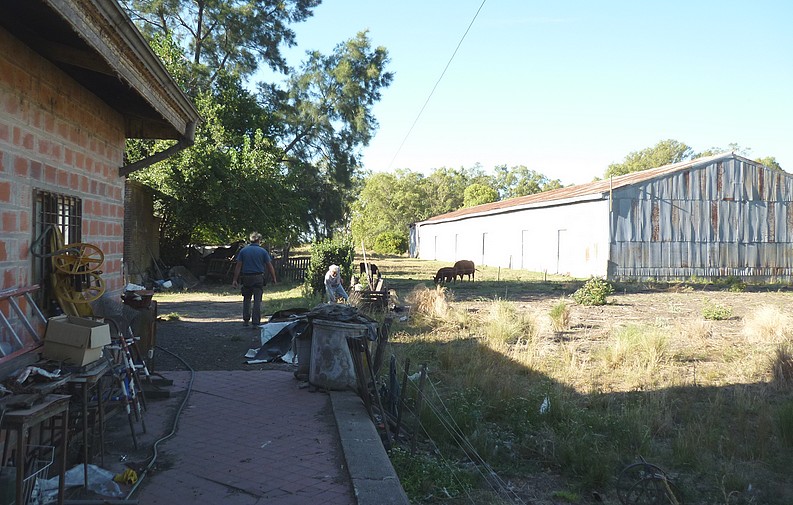
From the platform looking south (with the inevitable agricultural goods warehouse on the right) you can see that no track exists here any more. Indeed Cesar said that the line was never a great success (probably because it was always in competition with the larger BA Western Railway to the north, and the Great Southern Railway to the south) and his memory of its final days was the transport of workers into the area to lift the track and take away equipment. He was particularly annoyed that they removed the water borehole structure and pump, only to scrap it. It would have been better for the little community of Araujo if it had just been left in place.
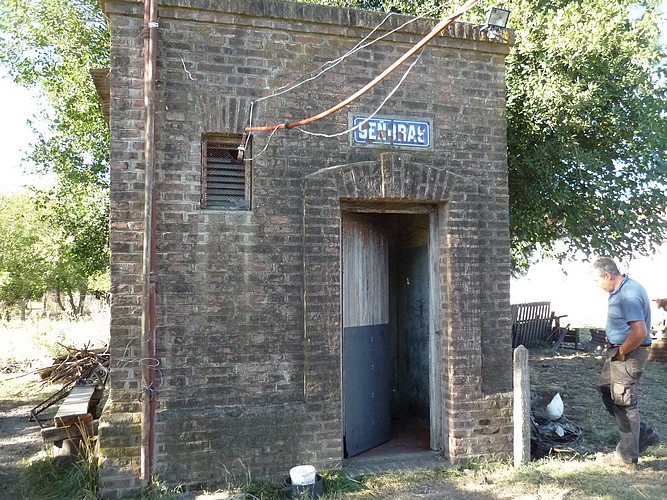
The gents toilet still stands, but is no longer used as such! On that note, we end this part of the story, but part two can be seen here.
Email Events diary Past events list Classified adverts Classic U.K. Buses Classic Irish Buses Classic Manx Buses